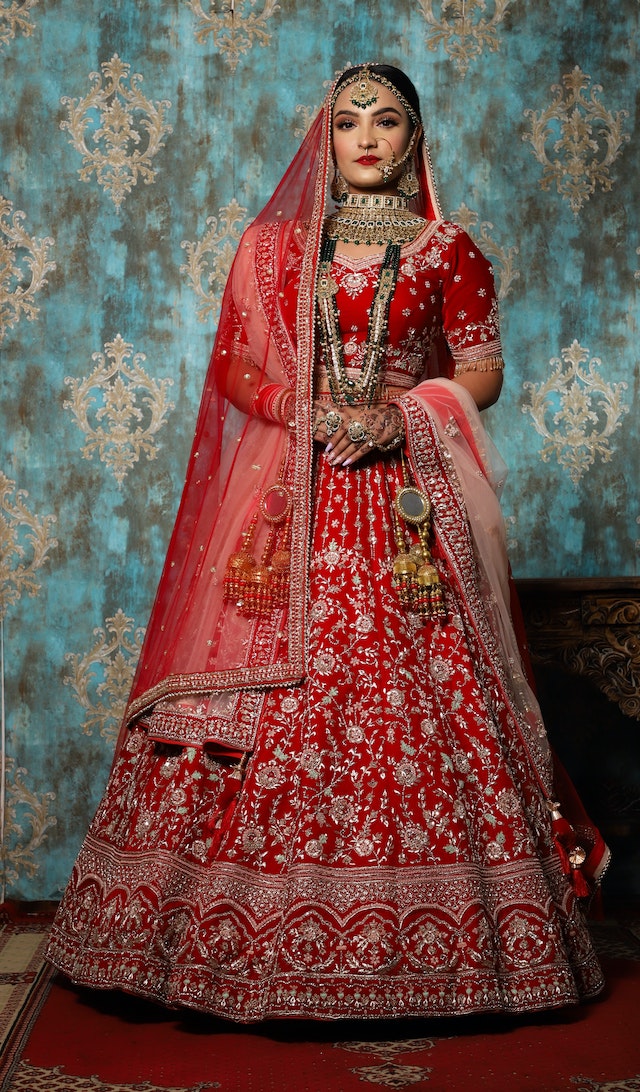The primary distinction between sharara and lehenga is that sharara features long flared pants, while lehenga has a long skirt. Both are Indian-inspired evening dresses often worn for weddings. Lehengas have three variations: sharara, ghagra, and lacha. They are both three-piece outfits, and at times, shararas are worn with two dupattas, with one serving as a veil and the other draped over the shoulders.
Key Takeaways
- Shararas have long flared pants, while lehengas have a long skirt.
- Both are Indian-inspired evening dresses and popular wedding attire.
- Lehengas have three variations: sharara, ghagra, and lacha.
What is a Sharara?
A sharara is a long dress with a fitted waistline worn with a kurta and a dupatta. They are made using materials such as cotton, silk, georgette, and net. Shararas are crafted from heavy fabrics with a dense lining. A sharara fully flares out from the waist and hangs loosely at the legs, looking like a skirt due to its looseness around the thighs. The palazzo of this dress is a pair of flared pants, which may or may not touch the floor.
Sharara has Lebanese origins, and its ancestors are found in Yemen’s Hamedan tribe, where they were worn by queens and princesses. It arrived in the Indian subcontinent during the Mughal ancestry in the 16th century and has since been widely used in Indian and Pakistani fashion industries. Many brides choose shararas as their wedding dress because it is more modern and stylish.
What is a Lehenga?
A lehenga is a three-piece attire popular in the Indian subcontinent, also known as chaniya, gagra, pavadai, or lacha. This outfit consists of a lehenga, a long skirt secured at the waist, a fitted blouse called a choli, and a dupatta. The blouse is short, leaving the wearer’s mid-riff bare. Women and girls of all ages enjoy this attire, made with embroidered or printed fabrics, and wear it for festivals, weddings, and other ceremonial occasions.
Lehenga was introduced during the Mughal empire as royal attire. The general public later began wearing it as well. While the basic elements such as embroidery and stitching style have remained the same, the variety of fabrics used has changed over time. They are now made from silk, velvet, brocade, lace, and net materials, and have various styles, including saree-style lehenga, A-line lehenga, straight-cut lehenga, jacket style lehenga, sharara cut lehenga, paneled lehenga, and fishtail lehenga.
What is the Difference Between Sharara and Lehenga?
The key difference between sharara and lehenga is that the sharara has long flared pants, whereas the lehenga has a long skirt. While shararas come with a kurta-like blouse piece, lehengas have short and fitting blouses.
Summary – Sharara vs Lehenga
A sharara is a long dress with a fitted waistline worn with a kurta and a dupatta, featuring flared pants and sometimes two dupattas. It is more modern and stylish. A lehenga is a three-piece attire popular in the Indian subcontinent, worn with a long skirt and a short, fitted blouse. This is the summary of the difference between sharara and lehenga.
